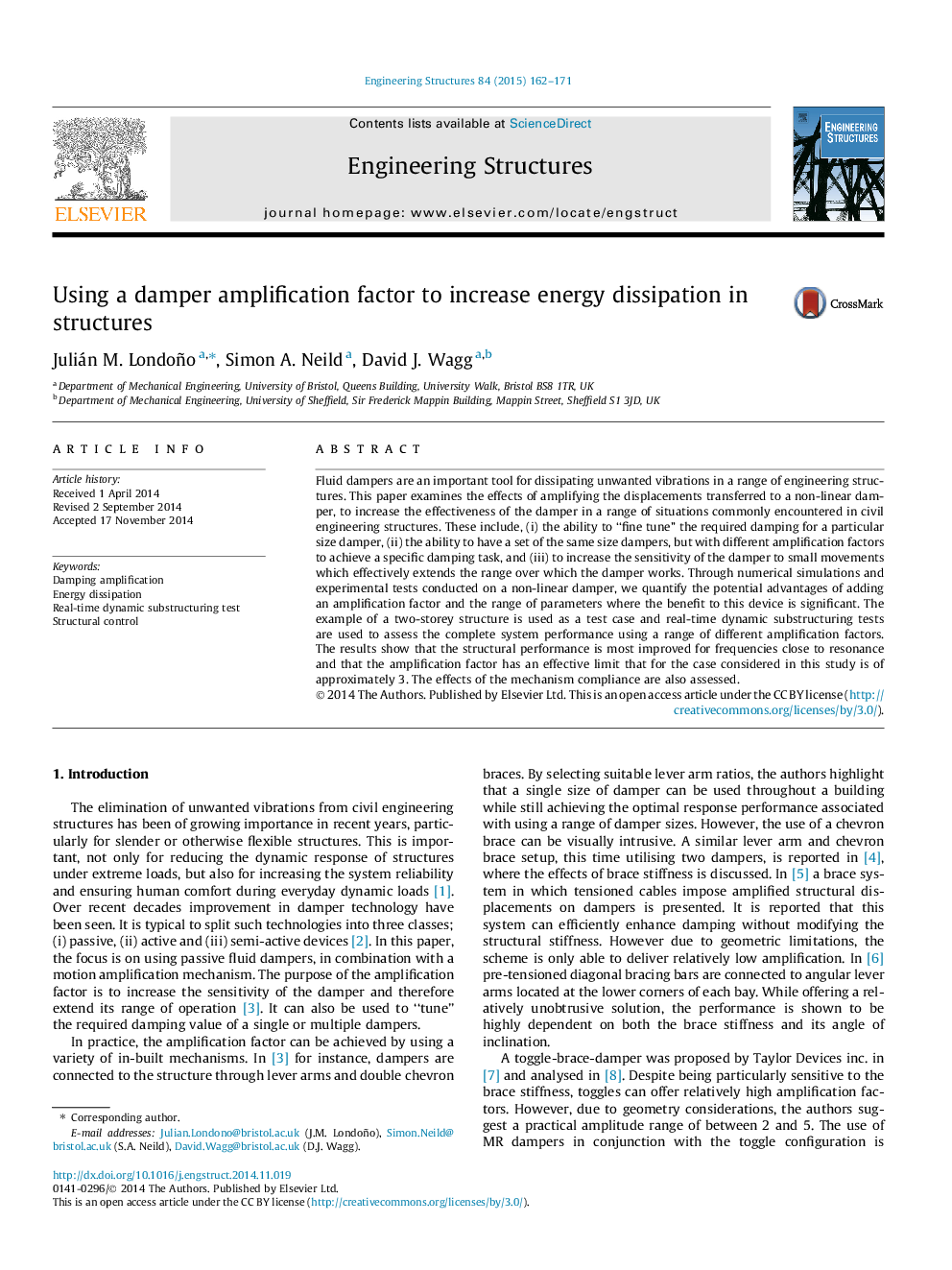| Article ID | Journal | Published Year | Pages | File Type |
|---|---|---|---|---|
| 6740544 | Engineering Structures | 2015 | 10 Pages |
Abstract
Fluid dampers are an important tool for dissipating unwanted vibrations in a range of engineering structures. This paper examines the effects of amplifying the displacements transferred to a non-linear damper, to increase the effectiveness of the damper in a range of situations commonly encountered in civil engineering structures. These include, (i) the ability to “fine tune” the required damping for a particular size damper, (ii) the ability to have a set of the same size dampers, but with different amplification factors to achieve a specific damping task, and (iii) to increase the sensitivity of the damper to small movements which effectively extends the range over which the damper works. Through numerical simulations and experimental tests conducted on a non-linear damper, we quantify the potential advantages of adding an amplification factor and the range of parameters where the benefit to this device is significant. The example of a two-storey structure is used as a test case and real-time dynamic substructuring tests are used to assess the complete system performance using a range of different amplification factors. The results show that the structural performance is most improved for frequencies close to resonance and that the amplification factor has an effective limit that for the case considered in this study is of approximately 3. The effects of the mechanism compliance are also assessed.
Keywords
Related Topics
Physical Sciences and Engineering
Earth and Planetary Sciences
Geotechnical Engineering and Engineering Geology
Authors
Julián M. Londoño, Simon A. Neild, David J. Wagg,
